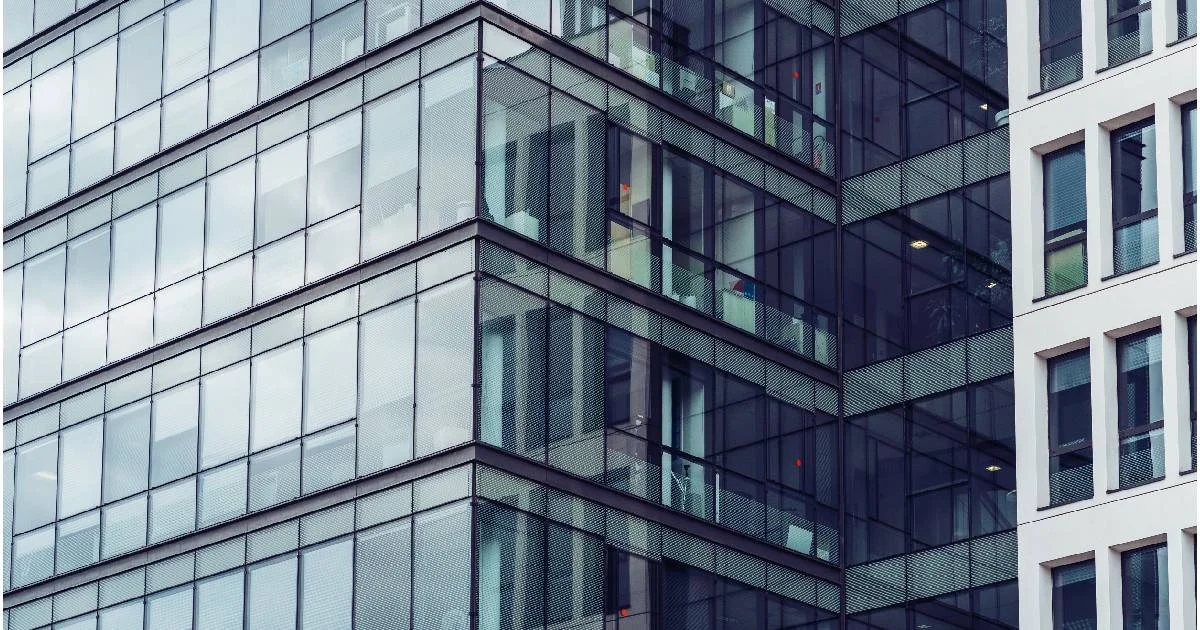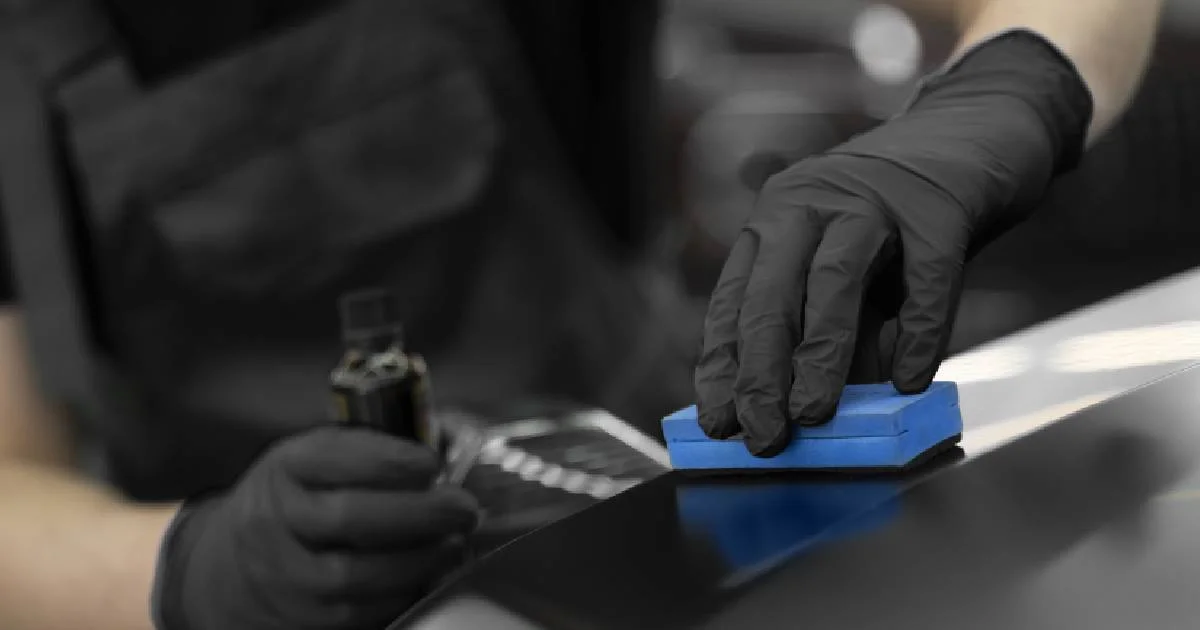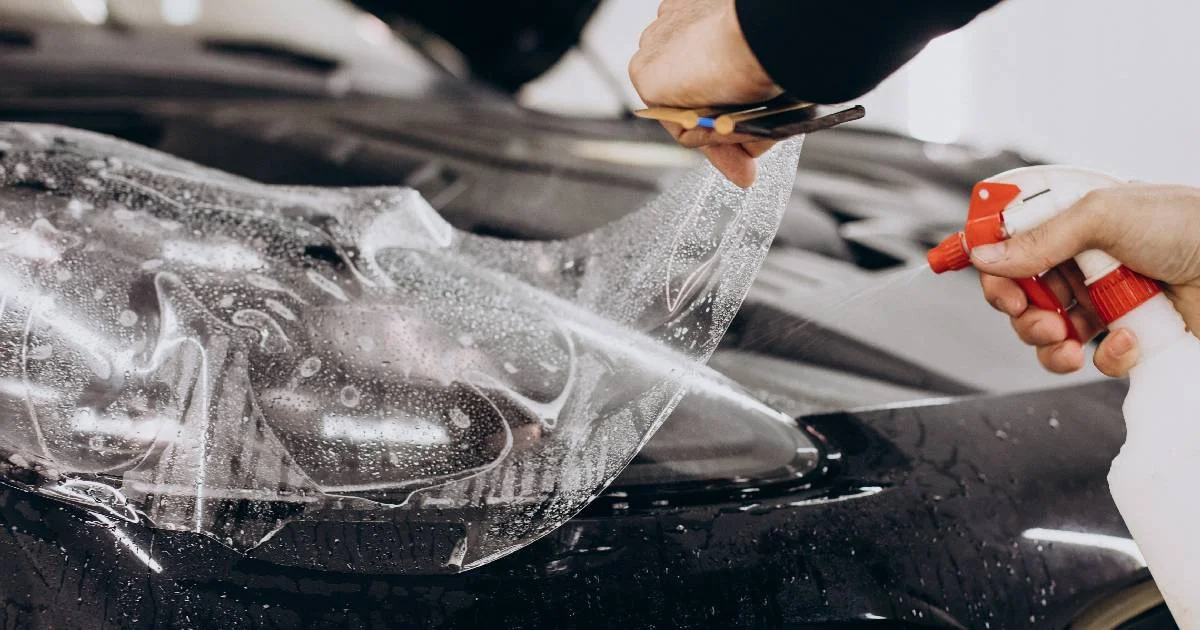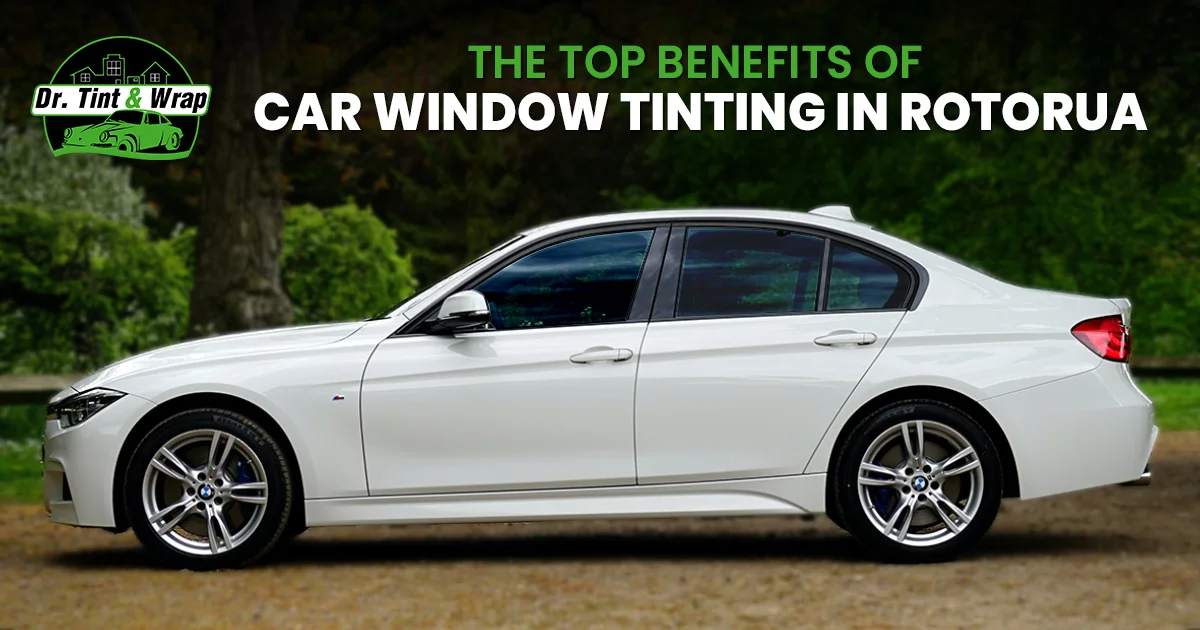
Choosing the Right Window Tint for Your Office: A Comprehensive Guide
28 Dec 2023, By AdminOffice window tinting is a valuable investment that can enhance the aesthetics, comfort, and energy efficiency of your workspace. Whether you're looking to reduce glare, improve privacy, or enhance the overall appearance of your office, choosing the right window tint is crucial. In this comprehensive guide, we'll explore the key factors to consider when selecting office window tinting to ensure you make an informed decision that aligns with your business needs.
Purpose of Window Tinting
Before diving into the world of window tint options, it's essential to identify the specific purposes for which you want to apply tint to your office windows. Common objectives include: Glare Reduction: Tints can minimize glare from the sun, creating a more comfortable working environment by reducing eye strain and distractions. Privacy Enhancement: Certain tints provide one-way visibility, allowing those inside the office to see out while preventing outsiders from peering in. Energy Efficiency: Window films can help regulate the temperature within your office, reducing the need for excessive air conditioning and heating. UV Protection: Tints can block harmful UV rays, protecting furniture, flooring, and equipment from fading and damage.
Types of Window Tint
Solar Control Films: These tints are designed to reduce heat and glare from the sun, promoting a more comfortable and energy-efficient workspace. Privacy Films: Ideal for meeting rooms or areas requiring confidentiality, privacy films can obstruct the view from the outside while maintaining visibility from within. Decorative Films: If aesthetics are a priority, decorative films come in various patterns and designs to enhance the visual appeal of your office. Safety and Security Films: These films add an extra layer of protection by holding shattered glass together, improving safety in the event of breakage.
Why should I consider office window tinting?
Office window tinting offers several benefits, including improved energy efficiency, reduced glare, enhanced privacy, and protection against harmful UV rays. Tinted windows can create a more comfortable and productive work environment for employees.
What factors should I consider when choosing the right window tint for my office?
Several factors should influence your decision, such as the type of film, level of tint, local regulations, and your specific needs. Consider factors like the amount of natural light you want, the level of privacy required, and the aesthetic appeal of the tint.
What types of window tint films are suitable for office use?
A: There are various types of window tint films designed for different purposes. Some common types include solar control films, privacy films, decorative films, and safety/security films. Solar control films are popular for reducing heat and glare, while privacy films can enhance confidentiality within the office.
How does office window tinting contribute to energy efficiency?
Window tinting can significantly improve energy efficiency by reducing the heat entering the office space. Solar control films, in particular, can block a considerable amount of heat, helping to maintain a comfortable temperature and reducing the need for excessive air conditioning.
Are there any legal considerations when it comes to office window tinting?
Yes, local regulations may govern the permissible level of tint for commercial buildings. It's crucial to check with local authorities to ensure compliance with tinting laws. Non-compliance could result in fines or the need to remove the tint.
Can window tinting protect against UV rays?
Yes, many window tint films are designed to block a significant percentage of harmful UV rays. This not only protects employees from potential health issues but also helps prevent furniture and interior elements from fading due to prolonged exposure to sunlight.
How do I choose the right level of tint for my office windows?
The level of tint you choose depends on your specific needs. If glare reduction and heat rejection are top priorities, a darker tint with a higher Solar Heat Gain Coefficient (SHGC) may be suitable. If maintaining a more open and bright environment is crucial, a lighter tint with lower SHGC may be preferred.
Can office window tinting enhance security?
Yes, certain types of window tint films, such as safety/security films, are designed to reinforce glass, making it more resistant to breakage. This can enhance the security of your office space by providing an additional layer of protection against forced entry or accidents.
How do I maintain and clean tinted windows in my office?
Cleaning tinted windows requires gentle care to avoid damaging the film. Use a mild soapy solution and a soft cloth or sponge for cleaning. Avoid abrasive materials or harsh chemicals, as these can scratch or damage the tint.
What is the expected lifespan of office window tinting?
The lifespan of window tinting can vary depending on factors such as the quality of the film, installation, and environmental conditions. High-quality films, when professionally installed, can last for many years. It's essential to follow the manufacturer's recommendations for maintenance and care to extend the lifespan of the tint. Choosing the right window tint for your office involves considering various factors to ensure it meets your specific requirements. Whether it's improving energy efficiency, enhancing privacy, or adding a decorative touch, the right office window tint can contribute to a more comfortable and productive workspace.

How Much Does A Ceramic Coating Cost?
28 Dec 2023, By AdminIn recent years, automotive enthusiasts and car owners alike have been raving about the benefits of ceramic coatings. This revolutionary protective solution has gained popularity for its ability to enhance a vehicle's appearance and provide long-lasting protection. However, one common question that often arises is, "How much does a ceramic coating cost?" In this blog, we will delve into the factors influencing the cost of ceramic coatings and help you understand what to expect when considering this investment for your vehicle.
Understanding Ceramic Coating
Before we dive into the cost, let's briefly understand what ceramic coating is. Ceramic coating is a liquid polymer applied to the exterior surfaces of a vehicle. Once cured, it forms a protective layer that shields the paint from various environmental contaminants such as dirt, bird droppings, UV rays, and more. The result is a glossy finish and enhanced durability that can last for several years.
Factors Influencing Cost
- Type of Ceramic Coating: The market offers a range of ceramic coatings with varying quality and durability. Entry-level coatings may be more affordable, but they might not offer the same level of protection as high-end options. Premium ceramic coatings often come with advanced features such as self-cleaning properties and increased resistance to harsh elements.
- Brand Reputation: Established and reputable brands in the ceramic coating industry tend to charge higher prices. This is often because they invest heavily in research and development to create cutting-edge formulations that outperform their competitors.
- Professional Application vs. DIY Kits: Another significant factor in the cost of ceramic coating is whether you opt for professional application or a do-it-yourself (DIY) kit. Professional application by certified detailers can be more expensive, but it ensures a high-quality and precise coating. DIY kits are generally more affordable but may not provide the same level of expertise and longevity.
- Preparation and Correction: The condition of your vehicle's paint before applying the ceramic coating can also impact the overall cost. If your car requires extensive paint correction, which involves removing imperfections like swirl marks and scratches, the preparation process becomes more labor-intensive and, consequently, more expensive.
- Size and Type of Vehicle: Larger vehicles, such as SUVs and trucks, will naturally cost more to coat than smaller cars due to the increased surface area. Additionally, the type of vehicle, whether it's a luxury car or a daily commuter, may influence the pricing.
In conclusion, the cost of ceramic coating varies based on several factors, including the type of coating, brand reputation, application method, vehicle size, and paint condition. While it may seem like a significant investment upfront, many car owners find that the long-term benefits, including enhanced aesthetics and protection, outweigh the initial cost.
Before making a decision, it's crucial to research different ceramic coating options, read reviews, and consider your budget. Whether you choose a professional application or a DIY kit, investing in ceramic coating can ultimately contribute to the longevity and resale value of your vehicle, making it a worthwhile consideration for automotive enthusiasts and those looking to protect their investment.

How Paint Protection Film Can Preserve Your Car's Resale Value in Hamilton
28 Dec 2023, By AdminIntroduction
Kia ora, Hamilton car enthusiasts! Your love for the open roads of the Waikato region deserves a ride that stands the test of time. When it comes to preserving your car's resale value in Hamilton, there's one essential secret that many overlook – Paint Protection Film. In this blog, we'll explore why Paint Protection Film in Hamilton is more than just a shield for your vehicle; it's an investment in maintaining the beauty of your Kiwi ride.
The Essence of Paint Protection Film
Hamilton, with its diverse weather conditions, can be harsh on your vehicle's exterior. From the blistering sun to the occasional downpour, your car battles against the elements daily. That's where Paint Protection Film (PPF) comes into play. This transparent, polyurethane film acts as an invisible armor, safeguarding your car's paintwork from road debris, stone chips, bug splatter, bird droppings, and the damaging effects of UV rays.
Preserving Resale Value
Hamiltonians are known for their practicality, and when it comes to buying and selling cars, resale value matters. PPF is a game-changer in this aspect. The protective film ensures that your car maintains its showroom shine, preventing paint fading and discoloration. Potential buyers are more likely to pay a premium for a well-maintained vehicle with a flawless exterior.
Protection Against Stone Chips
The roads around Hamilton, whether you're cruising down the expressway or exploring the scenic backroads, are prone to stone chips. These tiny projectiles can cause unsightly dings on your car's paint, diminishing its aesthetic appeal. With Paint Protection Film in Hamilton, your vehicle's paint is shielded from these flying rocks, ensuring a smooth and chip-free surface.
Easy Maintenance for the Kiwi Lifestyle
Hamilton's vibrant lifestyle encourages outdoor adventures, but this often means your car faces a barrage of challenges. PPF makes maintaining your vehicle a breeze. It repels dirt and grime, making washing your car a quick and easy task. The film's self-healing properties also mean that minor scratches disappear with exposure to heat, keeping your car looking brand new for longer.
Professional Installation in Hamilton
To reap the full benefits of Paint Protection Film, it's crucial to have it professionally installed. Seek out reputable automotive shops in Hamilton that specialize in PPF installation. Experienced technicians ensure that the film is applied seamlessly, providing maximum protection without compromising your car's appearance.
Conclusion
Investing in Paint Protection Film for your car in Hamilton is not just about aesthetics; it's a commitment to preserving your Kiwi ride's resale value. With the challenging weather conditions and diverse landscapes that the Waikato region offers, PPF is your vehicle's best defense against the elements. So, protect your investment, maintain that glossy finish, and hit the Hamilton roads with confidence, knowing that your car is ready for any adventure that comes its way. Paint Protection Film Hamilton – because your ride deserves the best!

The Top Benefits of Car Window Tinting in Rotorua
28 Dec 2023, By AdminIn the picturesque city of Rotorua, where stunning landscapes meet abundant sunshine, car window tinting has become more than just a trend—it's a practical necessity. Whether you're a local or a visitor, understanding the benefits of car window tinting in Rotorua is essential for a comfortable and protected driving experience. In this blog, we'll delve into the top advantages of car window tinting in Rotorua, focusing on the keyword "Car Window Tinting Rotorua."
1. UV Protection: Shielding You and Your Car Interior
Rotorua is known for its sunny weather, and with the sun comes harmful UV rays. Car window tinting is your first line of defense against these rays, as it can block a significant portion of them. Not only does this protect your skin from potential damage during your drive, but it also safeguards your car's interior from fading and deterioration caused by prolonged sun exposure.2. Enhanced Privacy: Peace of Mind on the Road
Privacy is a valuable asset, especially when driving through the bustling streets of Rotorua. Window tinting provides an added layer of privacy by making it harder for prying eyes to see into your vehicle. This added security ensures your personal space remains personal, whether you're stuck in traffic or parked in a busy area.
3. Heat Reduction: Stay Cool Even on the Hottest Days
Rotorua's summers can be scorching, and the inside of your car can quickly turn into an oven. Car window tinting is your ally in staying cool. By blocking a significant portion of the sun's heat, tinted windows help regulate the temperature inside your vehicle, ensuring a more comfortable ride even during the hottest days.
4. Glare Reduction: Clearer Visibility, Safer Driving
Glare from the sun can be blinding and dangerous while driving. Car window tinting in Rotorua helps reduce glare, providing better visibility and reducing the strain on your eyes. This results in safer and more comfortable driving conditions, especially during sunrise and sunset.
5. Interior Preservation: Keep Your Car Looking New
Rotorua's sun can be harsh on your car's interior, causing it to fade and deteriorate over time. Window tinting acts as a protective shield, preventing sun damage to your dashboard, upholstery, and other interior components. This preservation not only keeps your car looking newer for longer but also maintains its resale value.
6. Energy Efficiency: Reduced Air Conditioning Use
With car window tinting in Rotorua, you'll find yourself relying less on your car's air conditioning system. This reduced need for cooling can lead to improved fuel efficiency and savings at the pump, all while reducing your carbon footprint.
7. Customization: Personalize Your Ride
Car window tinting isn't just practical; it's also an opportunity to customize your vehicle. You can choose from various tint shades and styles to achieve the look you desire while still enjoying all the functional benefits.
Car window tinting in Rotorua isn't just a luxury; it's a practical investment that enhances your driving experience and protects both you and your vehicle from the challenges posed by the city's climate. From UV protection to privacy and heat reduction, the benefits are clear. So, if you want to enjoy safer, more comfortable, and stylish drives through Rotorua, consider car window tinting as a valuable addition to your vehicle. Experience the advantages of "Car Window Tinting Rotorua" firsthand and make the most of your time on the road.
